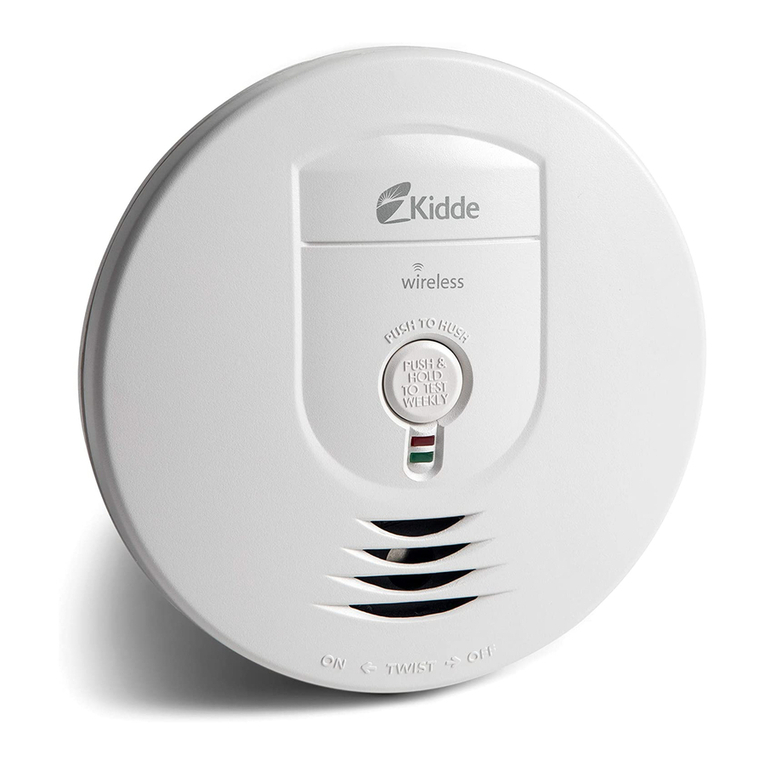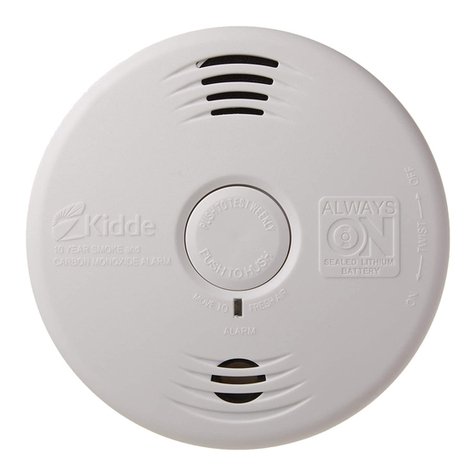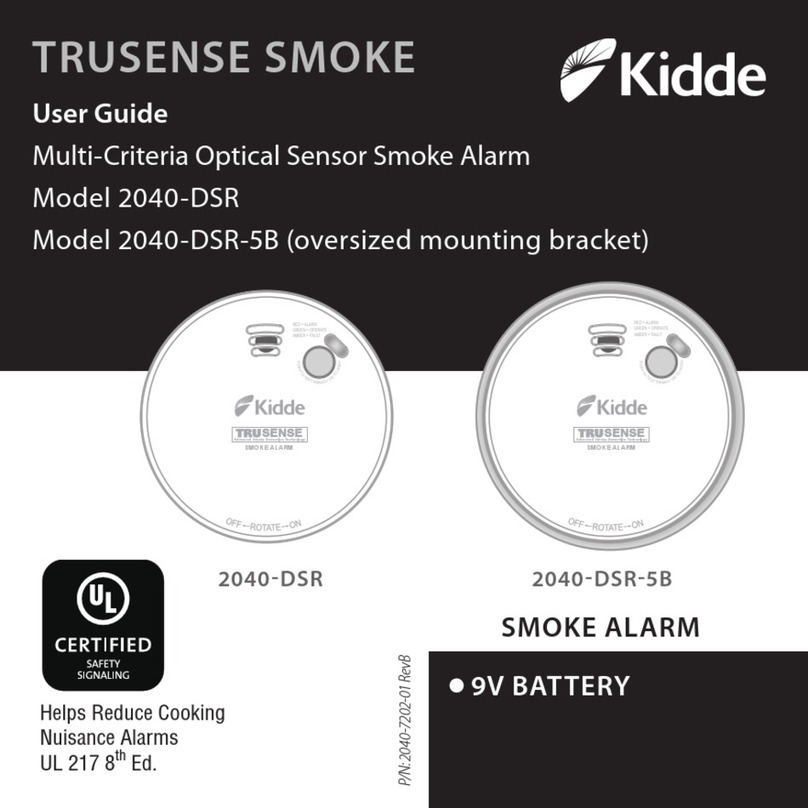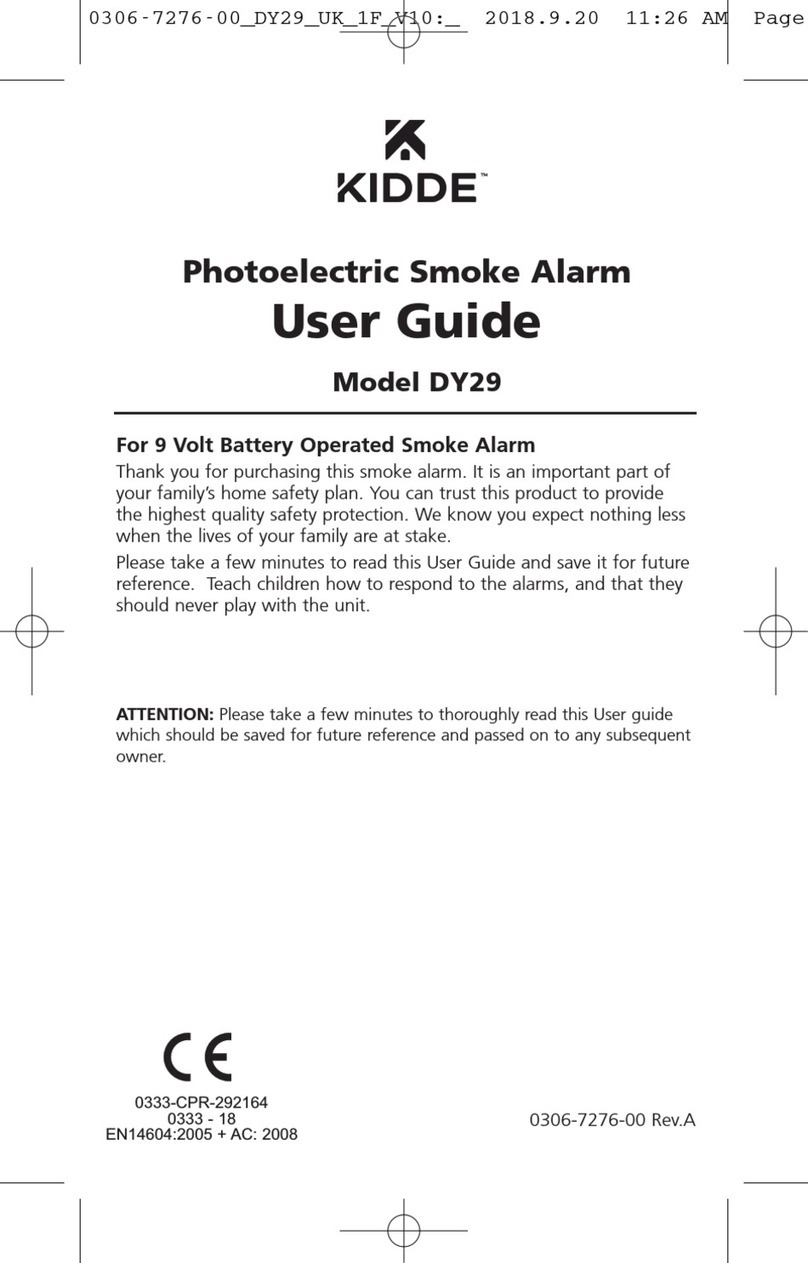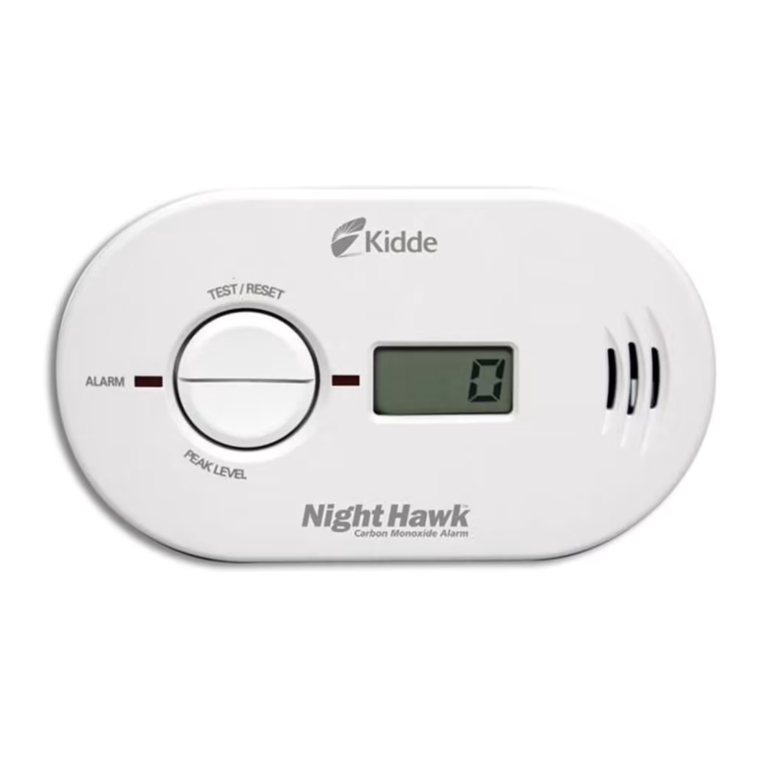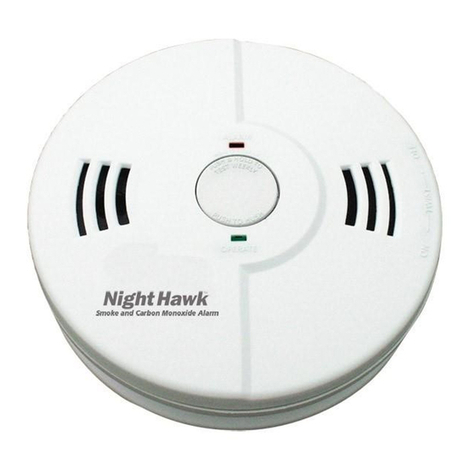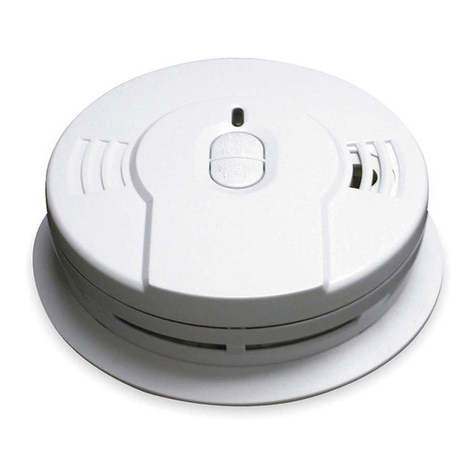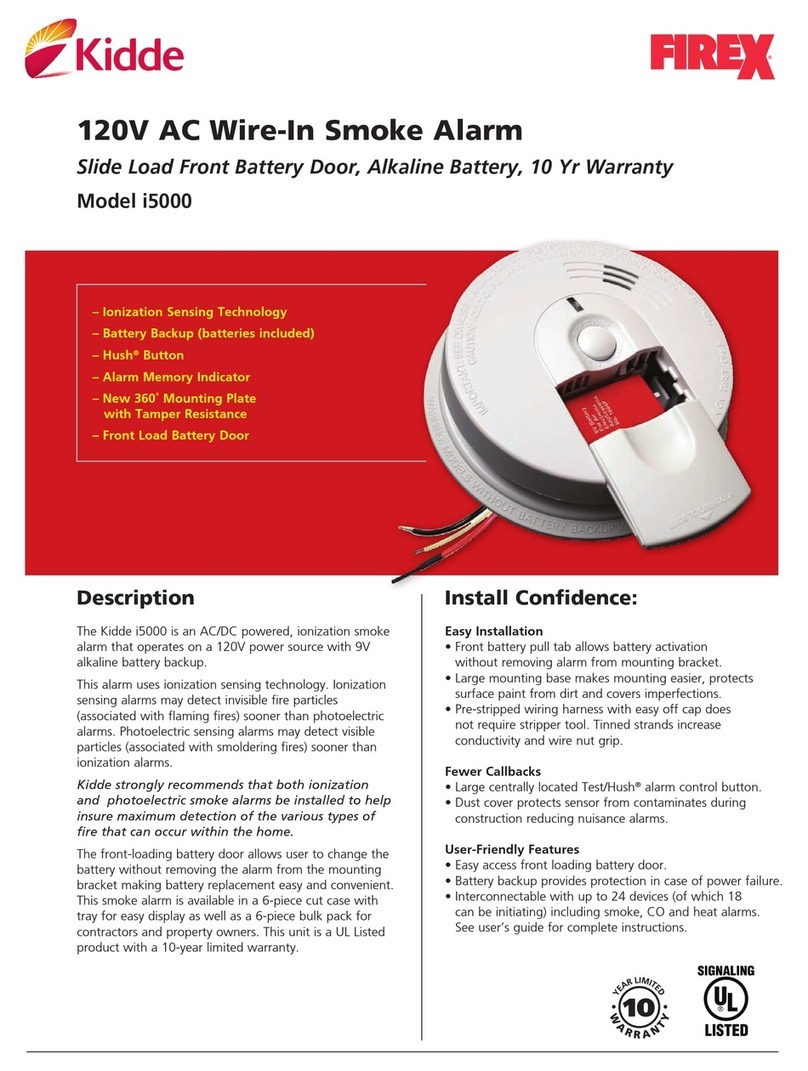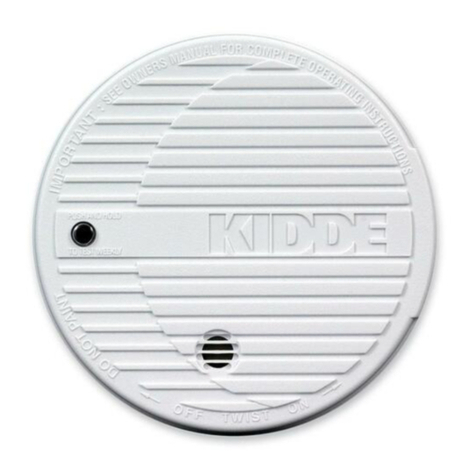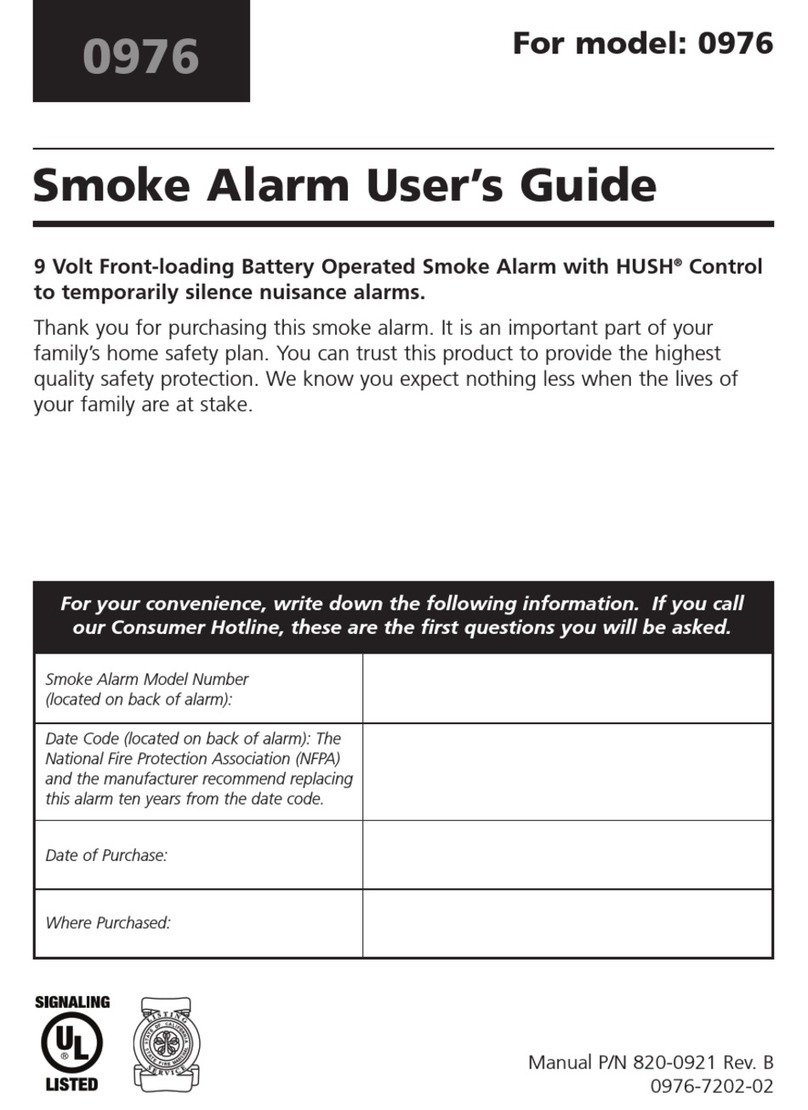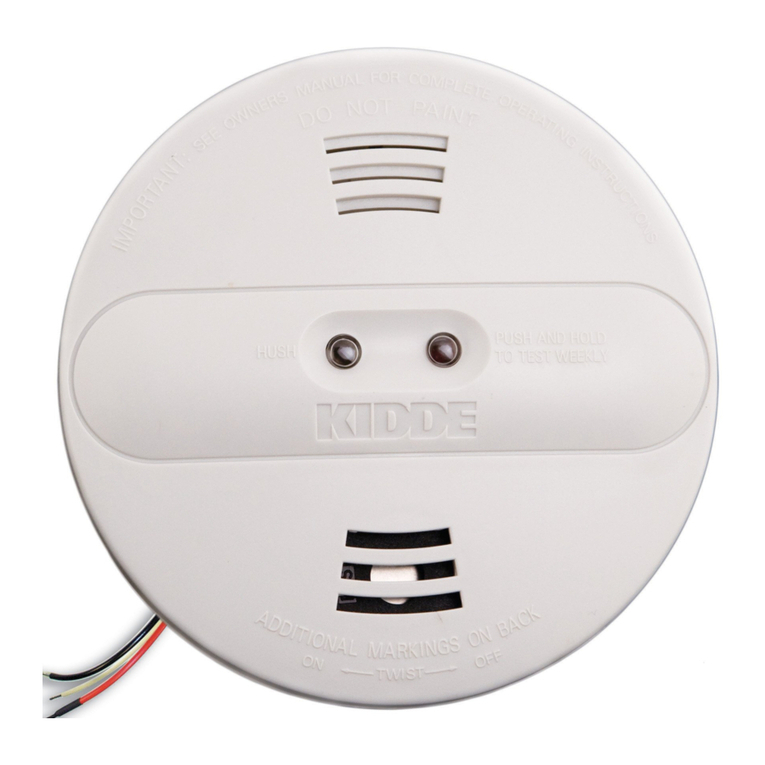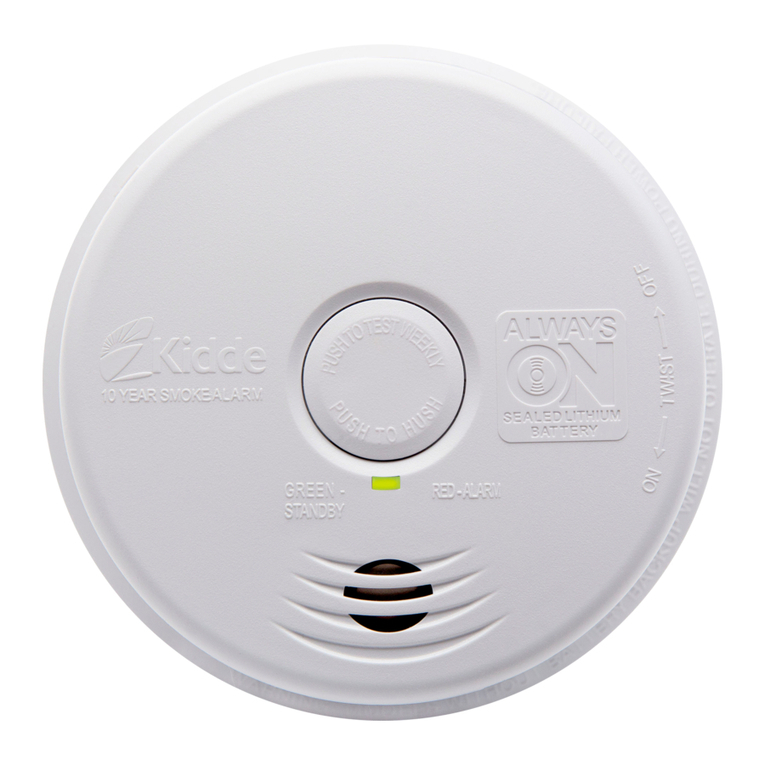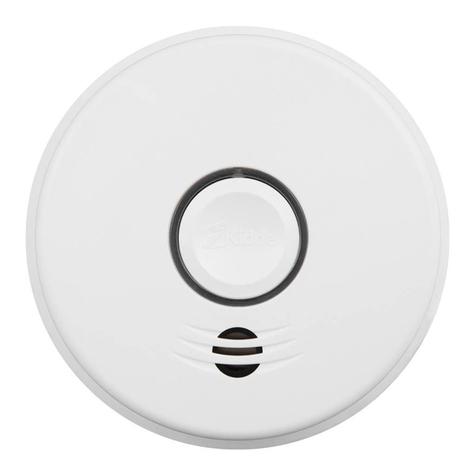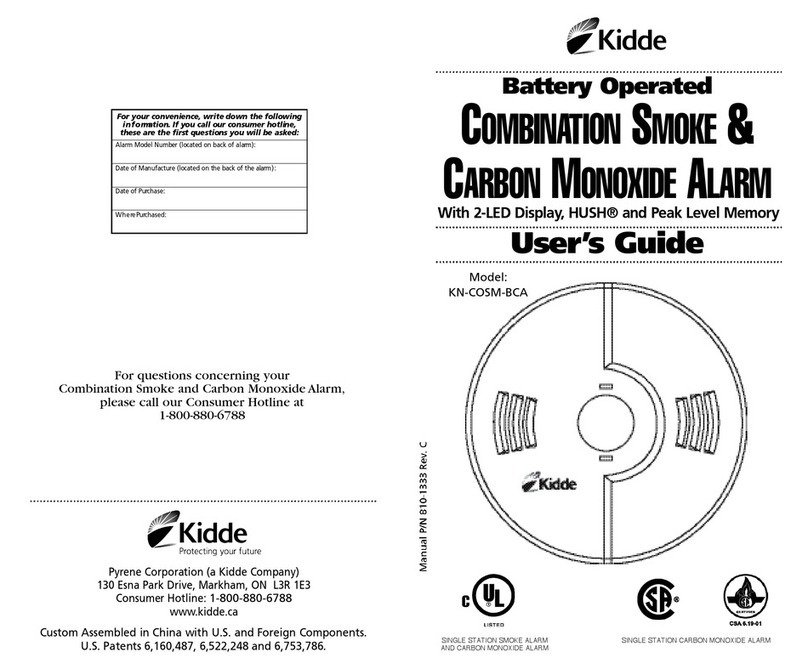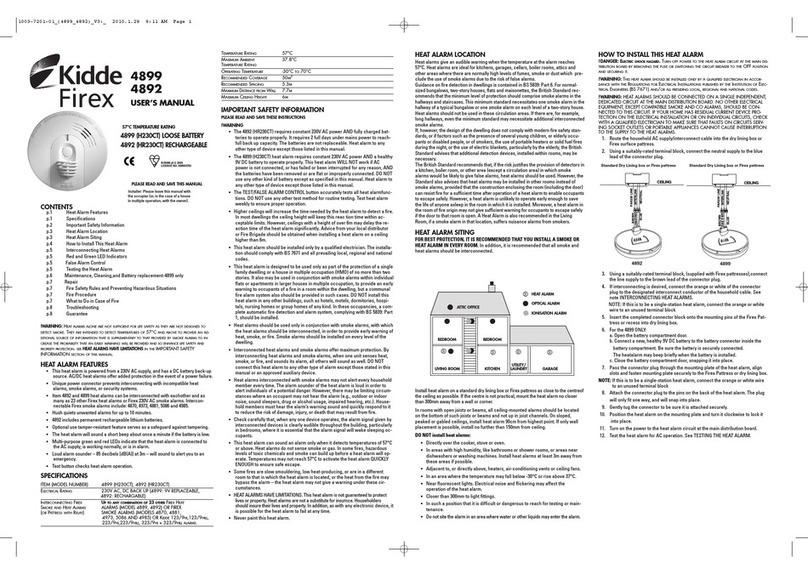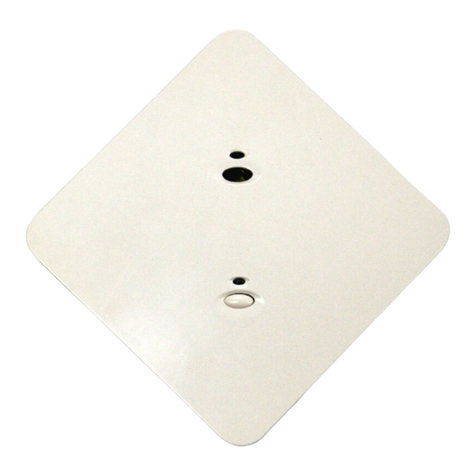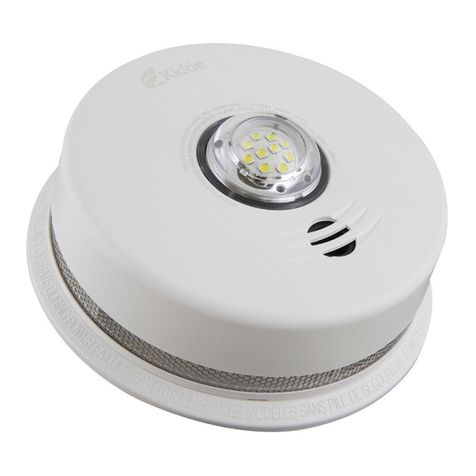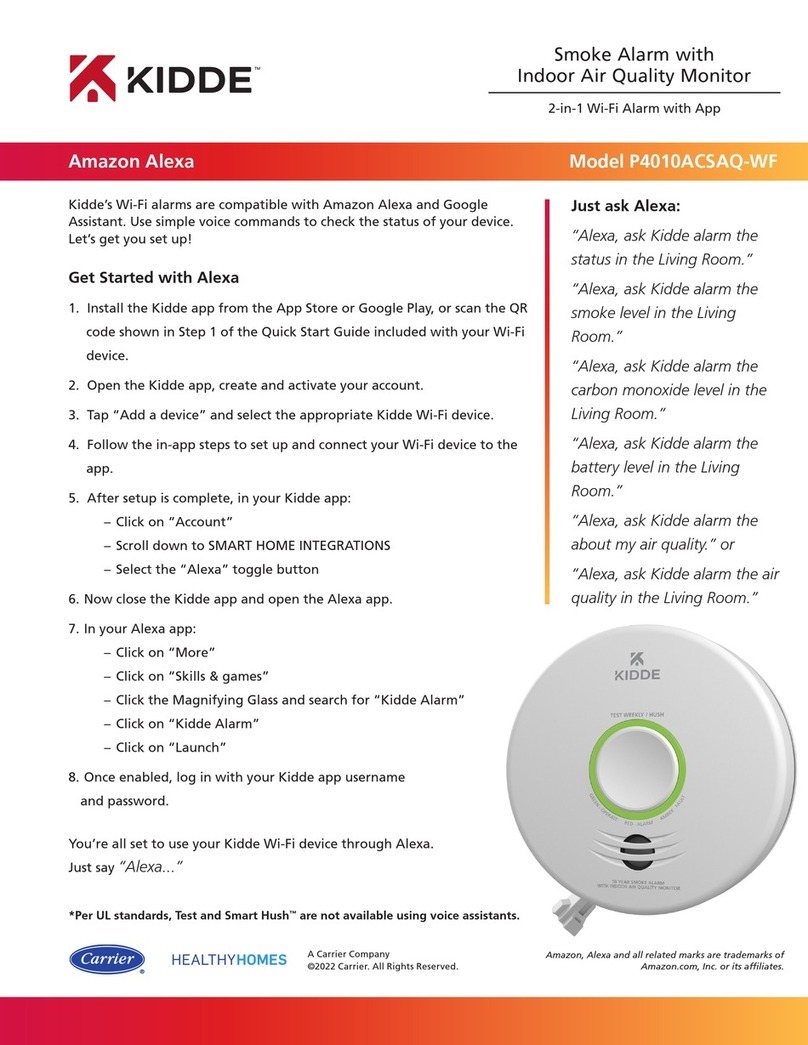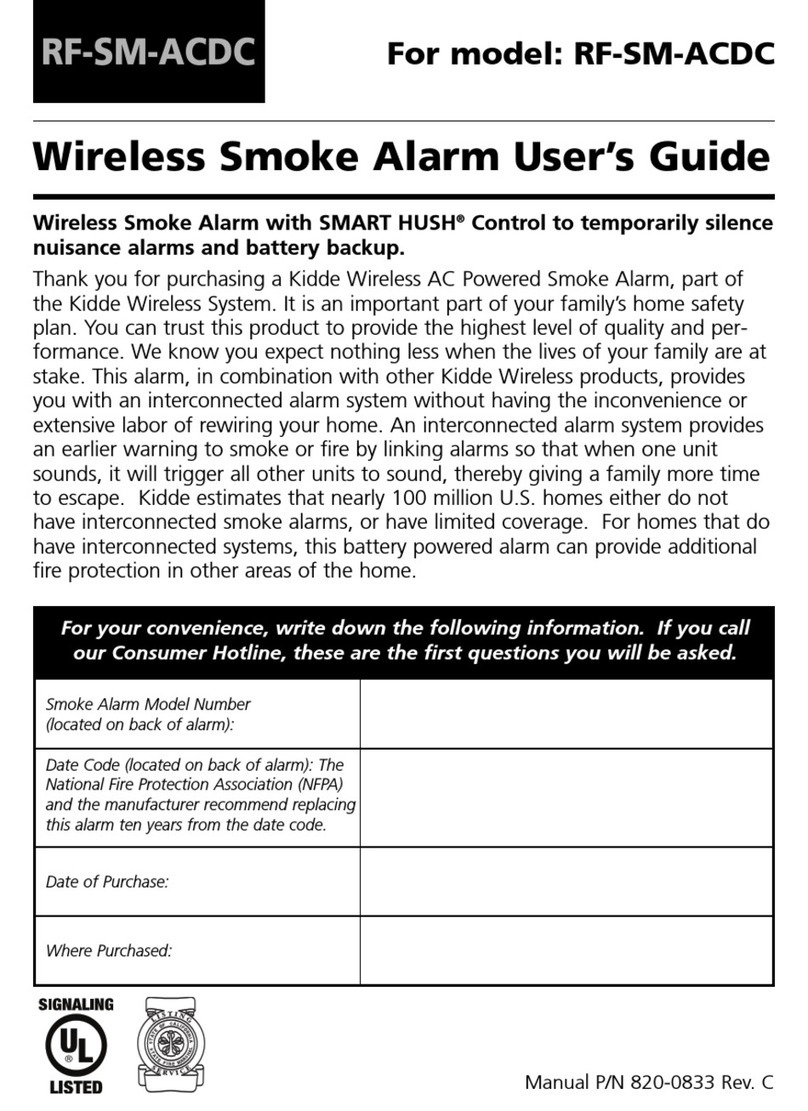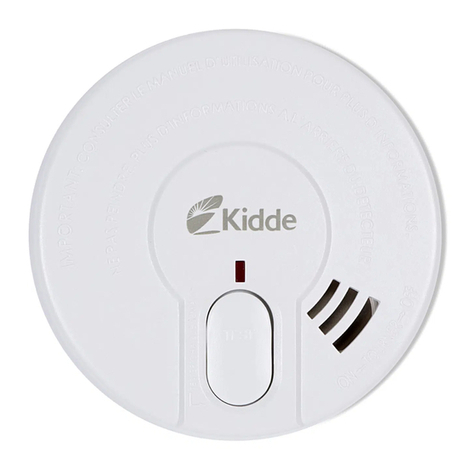• The LED will flash 1 second every 8 seconds while the alarm is in the temporarily
desensitized mode.
TESTING: Test by pushing the test button on the cover and holding it down for a
minimum of 5 seconds (or until the alarm sounds). This will sound the alarm if the
electronic circuitry, horn, and battery are working. If no alarm sounds, the unit has a
defective battery or other failure. DO NOT use an open flame to test your alarm, you
could damage the alarm or ignite combustible materials and start a structure fire.
NOTE: WEEKLY TESTING IS REQUIRED.
TEST THE ALARM WEEKLY TO ENSURE PROPER OPERATION. Erratic or low sound
coming from your alarm may indicate a defective alarm, and it should be returned for
service.
4.NUISANCE ALARMS
Smoke alarms are designed to minimize nuisance alarms. Cigarette smoke will not
normally set off the alarm, unless the smoke is blown directly into the alarm.
Combustion particles from cooking may set off the alarm if the alarm is located close
to the cooking area. Large quantities of combustible particles are generated from
spills or when broiling. Using the fan on a range hood which vents to the outside
(non-recirculating type) will also help remove these combustible products from the
kitchen.
This model i9010UK has a HUSHTM control that is extremely useful in areas prone to
nuisance alarms. For more information refer to Section 3, OPERATION AND TESTING.
If the alarm does sound, check for fires first. If a fire is discovered, get out and call
the fire service. If no fire is present, check to see if one of the reasons listed in Section
2 may have caused the alarm.
5.MAINTENANCE
NOTE: A Lithium-Ion battery, permanently sealed inside the alarm, powers this unit;
no battery installation or replacement is necessary for the life of the alarm.
WARNING! DO NOT ATTEMPT TO OPEN THE ALARM FOR ANY REASON!
TAMPER RESIST FEATURE
This alarm is equipped with a tamper resist feature that locks the unit to the
mounting bracket. The tamper resist feature is automatically activated whenever the
alarm is installed. Please contact the property owner or fire brigade if the alarm needs
to be removed for any reason.
WARNING! ATTEMPTING TO REMOVE THE ALARM FROM THE MOUNTING
BRACKET MAY RESULT IN DAMAGE TO THE ALARM OR MOUNTING
SURFACE.
BATTERY DEACTIVATION
This alarm has a low battery monitor circuit which will cause the alarm to “chirp”
approximately every 40-45 seconds, for a minimum of thirty (30) days, at the end of
the life of the alarm to indicate that the alarm needs replacement. Contact the
property owner or fire brigade to replace the alarm.
WARNING! DO NOT DEACTIVATE THE ALARM UNTIL THE END OF THE
ALARM LIFE, WHEN A “CHIRP” IS HEARD EVERY 40-45 SECONDS. ONCE THE
ALARM IS DEACTIVATED THE BATTERY WILL BE DEPLETED AND THE ALARM
WILL NO LONGER FUNCTION.
WARNING! ONCE THE ALARM HAS BEEN DEACTIVATED, IT CANNOT BE
REACTIVATED!
